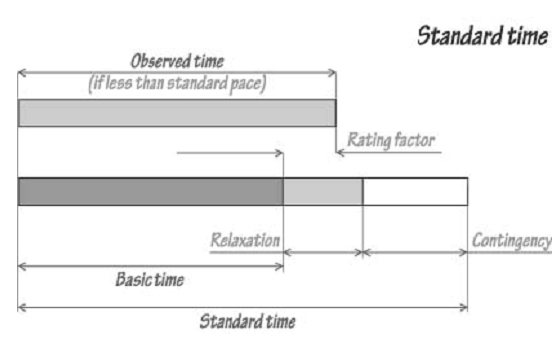Rating, Performance and Units of Work - Process Design
Rating is the assessment of the worker's rate of working relative to the observer's concept of the pace corresponding to the standard rating. If the standard pace is maintained, and the appropriate relaxation is taken, a qualified worker will achieve standard performance over a working day. This performance is denoted as 100 on the standard rating scale. However, this standard rating applies to Europeans and North Americans working in temperate climates; it may not be a proper standard to use in other parts of the world.
Rating and the determination of allowances for fatigue and other purposes is largely a matter of judgement. Work study practitioners are trained to recognise the standard rate of working and to assess a worker's speed and effectiveness relative to the standard (100) to the nearest five points. Examples of benchmark standard rates are: a person walking purposefully (4 mph or 6.4 km/hr); dealing a pack of playing cards in 22.5 seconds.

The standard time for a piece of work is the total time in which it should be completed at standard performance. Referring to the figure, it is determined as the basic time plus relaxation and contingency allowances, the basic time being calculated as:
Basic time = (observed time × observed rating) / standard rating (i.e. 100)
Relaxation allowance includes provision for personal needs (typically 5 to 7 per cent), fatigue (Typically 4 per cent for light work, seated in good working conditions), and a variable amount to reflect more demanding work or poor working conditions. Contingency allowance is a small allowance to cover intermittent work-related activities (e.g. process adjustment; consultations with the supervisor) and unavoidable delays.